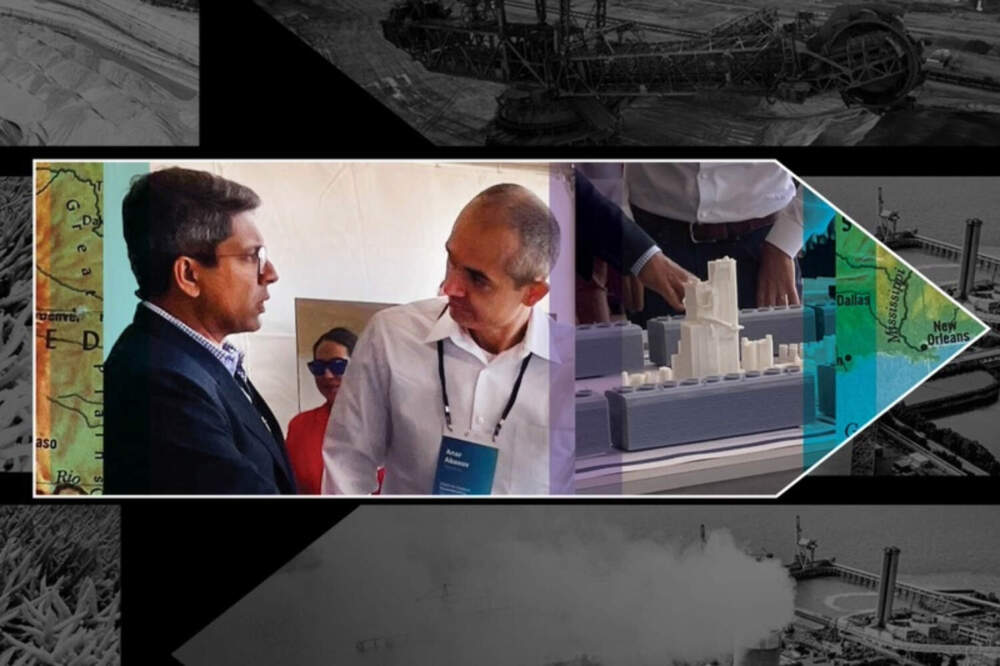Advertisement
These machines suck planet-warming carbon right out of the air
Resume
Find out more about our Reverse Course series here.
At the United Nations climate summit in Dubai, more than 100 countries support a plan to triple renewable energy by 2030.
But it won’t be enough to fix the climate crisis. A new report out Wednesday from the Global Carbon Project says carbon dioxide emissions were up this year despite the explosive growth in renewables and electric vehicles. That’s why some scientists have endorsed carbon-removal projects to pull greenhouse gasses out of the atmosphere.
This type of carbon removal uses technology called direct air capture, or DAC. But pulling carbon from the air is challenging, so experts warn the world still needs to keep cutting down on emissions, NPR’s Camila Domonoske says.
“At this point, major groups agree that we will need this technology, essentially because we are so far behind on our climate goals that we can't meet them without having large-scale removal,” she says. “On the other hand, they really emphasize that it shouldn't be used as an excuse to fall further behind.”
3 questions with NPR’s Camila Domonoske
How does direct air capture work?
“The key difference is that this is sucking out carbon dioxide that was previously released into the atmosphere and has dissipated out. So it's a lot more challenging from a technological perspective just because the concentration is really low. But you have some sort of chemical reaction that pulls carbon dioxide out of the atmosphere and bonds it into a chemical substance, and then you have a series of steps that you take to isolate just the carbon, the carbon dioxide, out of that substance. And in the end, you have a stream of pure carbon dioxide.”
How much carbon can these plants take out of the atmosphere?
“That is the trillion-dollar question in some ways because right now the scale is tiny.
“Occidental Petroleum is building what will be the biggest direct air capture plant in the world. When it's open, it will run for an entire year and pull out seven minutes worth of the world's emissions. But the oil industry in particular and some climate-focused groups are envisioning a potentially enormous scale for how much direct air capture the world might use several decades from now.
“This is a huge topic at the UN climate talks that are happening right now. In fact, the question over, ‘how much carbon dioxide we can feasibly remove from the atmosphere?,’ the technology is not inherently limited. You can build these plants anywhere because they're sucking the carbon dioxide out of the atmosphere, but it's expensive and it takes, in many cases, a tremendous amount of energy to operate them. So those are among the limiting factors. There are others. And how much the world actually will be able to build, it's a huge open question right now.”
Is “net-zero oil” possible?
“Occidental Petroleum is pursuing two different paths for its direct air capture plants. It's taking some carbon dioxide and it's just injecting it deep underground to store it and selling that as a service to companies or to the government. But it's also planning to take carbon dioxide from the air and inject it into old oil fields to squeeze more oil out of the ground. The oil industry has actually been doing this for decades, taking carbon dioxide and injecting it underground to get more oil out.
“The idea is if you use carbon dioxide that was pulled out of the atmosphere to do that, that you can then sell that oil at a premium, [Occidental Petroleum CEO] Vicky Holub thinks, as a climate-friendly oil. That you don't have to change anything else about your systems, you don't have to decarbonize, you don't have to pivot away from oil.
“It's really energy-intensive to pull carbon dioxide out of the atmosphere. It's also really expensive. Groups like the International Energy Agency say that we will need direct air capture, but that we need it to balance out emissions we can't cut any other way, that we're going to use a small amount of it to balance out a small amount of emissions.
“Vicki Holub has a vision of using much more oil and balancing it out with much more carbon dioxide removal. You burn the oil and the oil releases carbon dioxide into the atmosphere. The argument is that if you are sucking an equal amount of carbon dioxide back out, it balances out. It doesn't address things like air pollution and the health costs of using oil. There are real questions about methane leaks and how airtight the entire system can be. The accounting of it is complicated. There are big debates over the future of this idea.”
Chris Bentley produced and edited this interview for broadcast with Catherine Welch. Allison Hagan adapted it for the web.
This segment aired on December 6, 2023.

